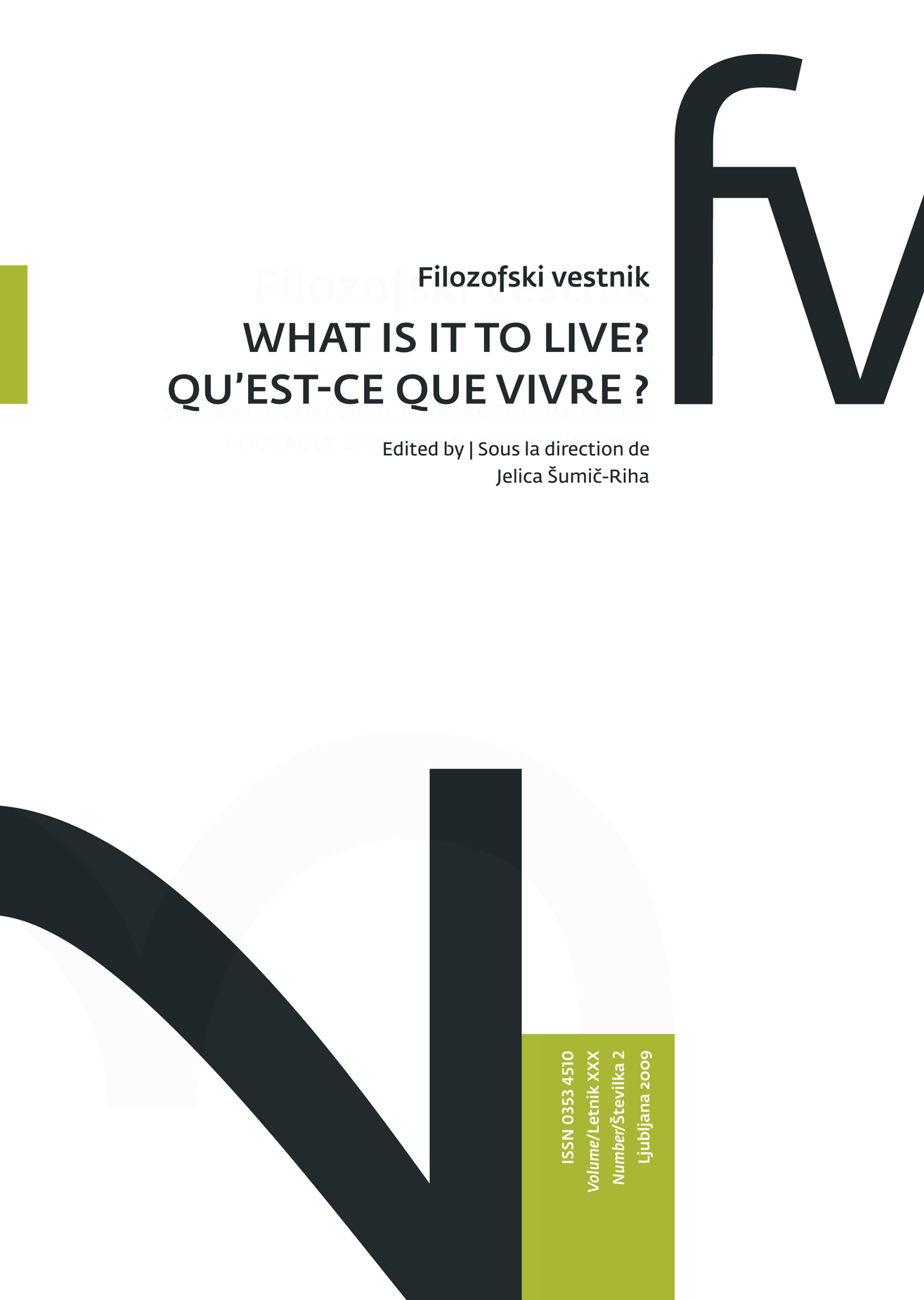What is it to Live? Critical Considerations with Regard to Badiou and Bergson Concerning Life Theory and its Language
Povzetek
This essay raises a philosophical question concerning the language of Life Theory. It aims to prove the assumption that in contrast to Life Science, which today is connected to neuroscience and biotechnology, a theory that comprehends “life itself” must exceed the computerized mathematics of modern materialistic positivism. For this purpose, the conceptual possibility of such a theory is analysed from the perspective of 20th century philosophy of life. Beginning with Henri Bergson, who developed an immanent concept of life“from within itself” in L’évolution créatrice (1907), the analysis turns to Alain Badiou, whose fundamental onto-phenomenology of being is summed up in Logiques des mondes (2006) by answering the question “what is it to live”. The comparison between the two philosophies exposes the conditions of a Life Theory that encompasses, beyond the results of the digitalizable language translated from the neurons of the human brain, the uncountable and unpredictable aspects of living and being alive. These conditions are: an ethics of universality, a differential philosophy of time, and a concept of independent novelty enforced by the (in)aesthetics of subjective creation.Prenosi
Podatki o prenosih še niso na voljo.
Prenosi
Objavljeno
2010-06-09
Kako citirati
Kamecke, G. (2010). What is it to Live? Critical Considerations with Regard to Badiou and Bergson Concerning Life Theory and its Language. Filozofski Vestnik, 30(2). Pridobljeno od https://ojs.zrc-sazu.si/filozofski-vestnik/article/view/3216
Številka
Rubrike
Other Than Being
Licenca
Avtorji jamčijo, da je delo njihova avtorska stvaritev, da v njem niso kršene avtorske pravice tretjih oseb ali kake druge pravice. V primeru zahtevkov tretjih oseb se avtorji zavezujejo, da bodo varovali interese založnika ter da bodo povrnili morebitno škodo.
Podrobneje v rubriki: Prispevki





